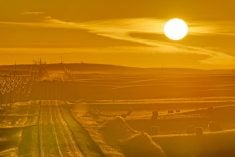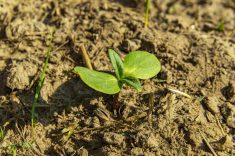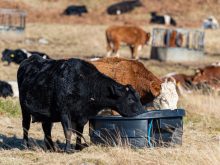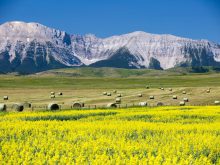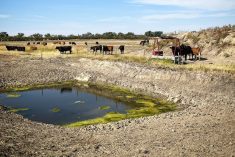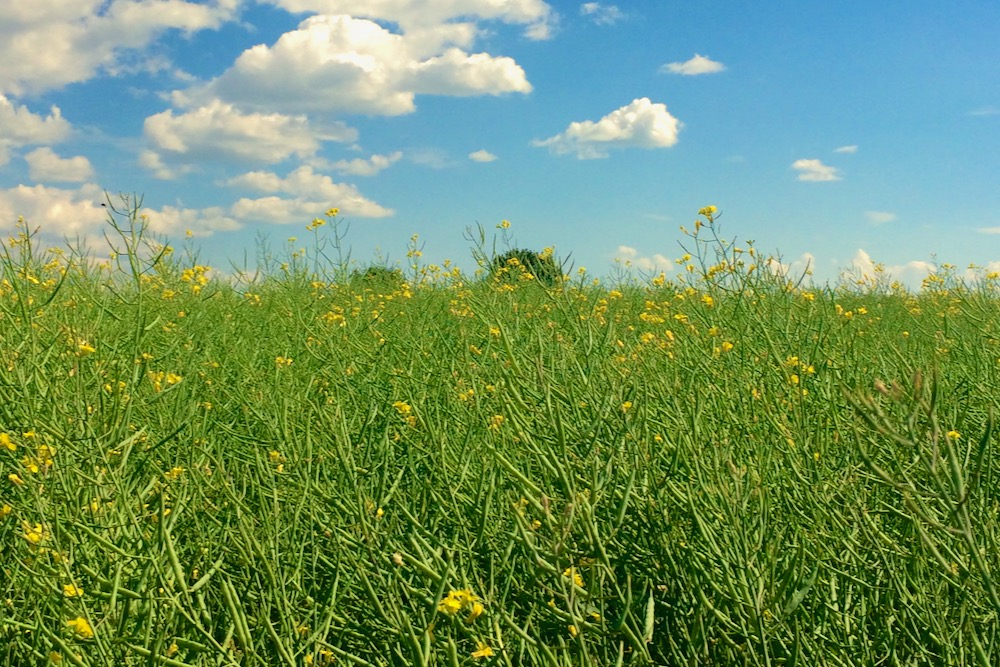This piece is all about encouraging the energetic young folk that are advising farmers to measure it in the field when a water question comes up. There are many additives for spray water on the market but check the water source first. A change of water may be the best and cheapest route.
Water chemistry can be a daunting subject but in the Coles Notes version it can be quite simple. The important “stuff” for agricultural needs can be measured in the field. Water in the spray tank, domestic use, livestock use and irrigation are the big reasons we need to know what is in our water.
Read Also

Claas brings 1000 Series SP forage harvesters to Canada
In mid-August, Claas unveiled its new line of Jaguar forage harvesters at an event in Visalia, California, deep in the heart of that state’s dairy region.
Water chemistry: The Coles Notes
The major things dissolved in water are:
1. Positively Charged:
- Calcium (Ca++);
- Magnesium (Mg++); and,
- Sodium (Na+).
Hard Water is dominated by Ca and Mg and soft water by Na.
2. Negatively Charged:
- Sulphate (SO4);
- Bicarbonate (HCO3-); and,
- Chloride (Cl-).
Total dissolved solids (TDS):
TDS is the sum of all the things dissolved in a particular water and can be expressed as parts per million (ppm). The chemically correct unit for TDS is mg/l (milligrams per litre) but for waters we use ppm. It’s easily understood.
To get the TDS of a water sample you can send it to a lab. They will determine all of the above, add them up and give you the TDS in ppm (or mg/l).
But, for most waters we use, a very good first approximation of TDS can be made by measuring the amount of electricity that a water will conduct. This measurement, Electrical Conductivity (EC), is sometimes referred to as Specific Conductance. The EC is a temperature-dependent measurement; all data is corrected to 25 C.

Measuring water in the field
EC is measured in units of microSiemens/cm (µS/cm).
For reference points:
- Mountain-fed rivers (for example the Saskatchewan River) measure about 400 µS/cm.
- Sand point wells measure about 500 to 1,000 µS/cm.
- Most farm wells measure between 1,500 and 3,000+ µS/cm.
The Saskatchewan government website www.saskh2O.ca is a good reference. It has data for all Saskatchewan cities and towns. This website uses Specific Conductance as a term for EC.
Sloughs can be almost any EC, and looking at the water gives few clues. Very nice clean looking water can be loaded with hard water salts that really take the edge of off glyphosate herbicides. And, do not assume that the water stays the same it can change drastically with changing conditions.
I use the EC meter shown in the briefcase in the photo. The briefcase also holds a notebook for recording results and a kit to measure hardness. This unit has 50 feet of cord that can be thrown in rivers or sloughs, over bridges or wherever. It is very rugged and dependable. It set me back about $900 many years ago.
Many EC meters measure pH also but pH measurements are not always needed. For certain herbicides pH can be very important so do read the label details about the individual herbicides.
Water hardness
Water hardness can be easily measured in the field using a Hach hardness kit — usually available at businesses that supply water well drillers with pipe, pumps etc.
Hardness is determined by the amount of calcium plus magnesium that are in a sample, expressed as parts per million. It is a complicated equation but the kit takes care of that. Some kits express hardness in an old unit (grains per gallon). This measurement is still in use because water well drillers still use it.
With a knowledge of EC and Hardness we have 90 per cent of what we need to know about a water. Chapters 8 and 9 of Henry’s Handbook of Soil and Water have reference data for both surface and ground water for all three Prairie provinces
For more information on water issues associated with herbicide spray, see provincial agricultural websites.
Rule of thumb
Water quickly picks up minerals as it passes through or over soil materials. For water that comes from glacial soil materials the hardness in ppm is about 0.5 x the EC. Waters that have passed through pre-glacial (bedrock) deposits are much softer.
As a general rule, Alberta well waters are much softer because many of them are completed in bedrock formations. The depth of glacial material is much less in Alberta than in Saskatchewan and Manitoba.
Quality Control
If you are doing water measurements in the field, it is important to check the results against a lab on a regular basis. I use Saskatoon tap water as a standard and check with City of Saskatoon staff to see what they are putting in the lines.




